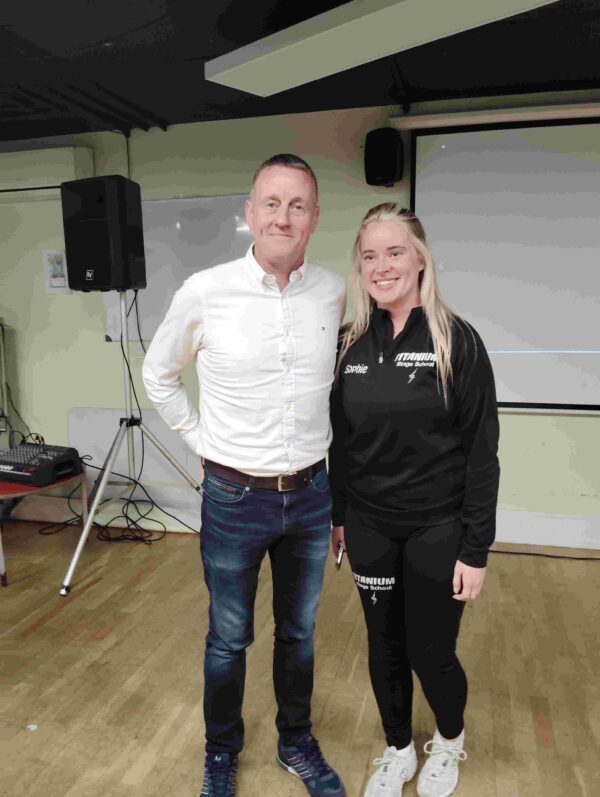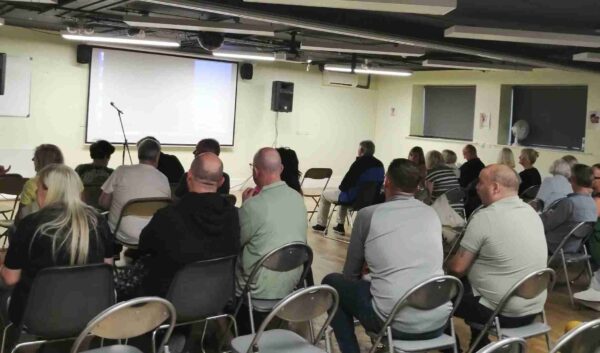New Documentary lays bare hidden implications of the housing crisis
By Niamh Byrne
It’s no secret that Dublin is going through a big housing crisis. Dublin accounts for 70 per cent of all homeless people with 6,935 adults and 3,165 children without homes in the capital. This means that the number of homeless in Dublin city surpassed 10,000 for the first time in March of this year. More recent figures suggest it is now over 14,000. Bottom line, it’s not a problem that can be overlooked anymore. One area particularly affected by the housing crisis is our very own Ringsend.

Recently a planning application was put in to demolish existing one and two storey buildings in Ringsend, and to replace them with a 15-storey, 48-unit complex. The building would not only overshadow the homes around it, but would also have no social housing available. The law here states each private developer must provide 10% social housing. However, some have found a way around this, for example, if the ground floor of the building is less than 1 000 square metres, the developer may in some cases seek an exemption. The lack of social housing means young families are stuck living with parents or grandparents, often in overcrowded homes or face being pushed out of their local area entirely.
One example is that of local woman Sophie Gregg, who grew up in the Ringsend flats. Sophie, 21, is in her last year of college training to be a teacher, and worries she might have to move from her childhood neighbourhood as the cost of living is so prohibitive.
Set against the background of an unprecedented housing crisis and record numbers of homeless people. . .
Freelance cameraman Eamon Cleary, originally from Tallaght but now residing in Ringsend, has just completed a documentary, outlining the problems of the housing crisis, and particularly its impact on local traditions. After giving a talk to a packed house in the Community Centre, NewsFour caught up with Eamon to talk about his documentary.
NF: Did you get any help making the documentary or was it just you?
Eamon: No it was just me. I worked for a few years as a freelance cameraman and at the start of lockdown I started recording things going on around the area which was meant to be a separate project but at the same time the notice about the 15-storey complex being made came about. So I thought why don’t I document everything together and make a documentary on the housing crisis instead, and show exactly who the crisis is affecting. During all this I met with a young local girl Sophie. Sophie is a great example of a young person who is studying in Maynooth to be a teacher, which is a good job, but still won’t be able to afford housing.

NF: Is there anything in particular that inspired you to make this documentary?
Eamon: No, I’m from Tallaght originally and lived here for five years. Seeing the Community spirit specifically during lockdown made me want to help people with the housing crisis and show they’re not looking for free handouts.
NF: What are you planning to achieve from the documentary?
Eamon: To raise awareness. There’s a scene in Boyz n the Hood where the guy’s dad takes him up to a billboard and tells him what they do is they get rid of the local people and raise the value of the market and sell it at a profit. I’m laughing thinking this film was made in the ‘80’s and it’s still the same! But Ringsend traditionally was an area no one was in, it was just wasteland, but now it’s a very valuable area and my fear in the long-term is that people with money would like to move in and raise those flats to the ground and I’m hoping this documentary can always be pointed to to say it’s more than that. That’s also where the name of the documentary came from ‘More Than Bricks and Water’.
. . . A working class area in the heart of Dublin city tries to maintain its presence and culture in the face of corporate development.
Keith O’ Brien has a great line in it where he says: “People who are selling the houses are piggy backing on all the hard work the locals have put in.” Through all the recession, drug problems, unemployment, they still held up all the positive things like the rowing and soccer clubs. They also held up traditions such as carrying the coffins over the bridge. Locals say they can’t remember when this tradition started. It’s always been there but they worry it might not be that way one day with all newcomers coming in and the fear of them being pushed out, as well as the housing prices being too high.
NF: You mentioned about traditions being upheld. Why is this such an important factor of the documentary?
Eamon: People from working class areas are perceived as one thing and we’re trying to show the other side of the coin and all the hard work people put into the community to make everyone feel welcome and part of a group. These are the same people who can’t afford to stay in the area they’ve lived in their whole lives. The carrying of the coffins over the bridge, the rowing clubs, and the community events are all things that might one day fade away because of the soaring housing prices that will lead to big changes.
NF: How come you chose film as the way of putting the word out?
Eamon: It was just something I was always interested in and I had a background of working in. I thought as I had the camera here, why not? So I ended up filming over a four year period of people’s lives and the work they put into the community and got to know everyone better.
NF: Is it going to be aired on TV?
Eamon: Yes, that’s the plan, I worked for years with TV3 and then Virgin Media and a bit with RTÉ doing camera man so I’m going to send it onto them. If it goes ahead I’ll have to cut it down to 45 minutes as it’s currently 50 minutes.
NF: What have you learned from the experience?
Eamon: I’ve learned loads actually! I’ve learned a good bit on how to make a documentary and put in what needs to be said. I’ve heard people who’ve made them before saying it’s a labour of love, like forget about payment cause you won’t get much. I’ve done documentaries for my Degree and Masters but this is my first one I’ve completed by myself and I also learned a good bit about editing.
NF: If you wanted audiences to take one thing away from the documentary, what would it be?
Eamon: It would be to open your eyes to a problem that working class communities are facing. To understand the essence of working class communities and the effort that is put in by decent people, and that it’s not as straightforward as ‘we can afford to live there and you can’t’, for working class people as well as middle and upper class. Hopefully the documentary can keep the wolf from the door.



